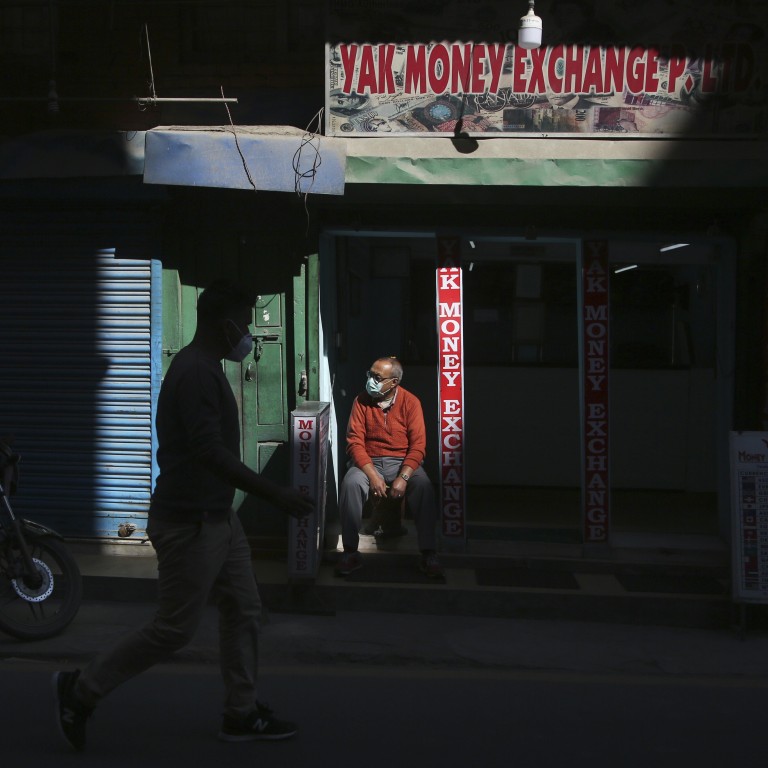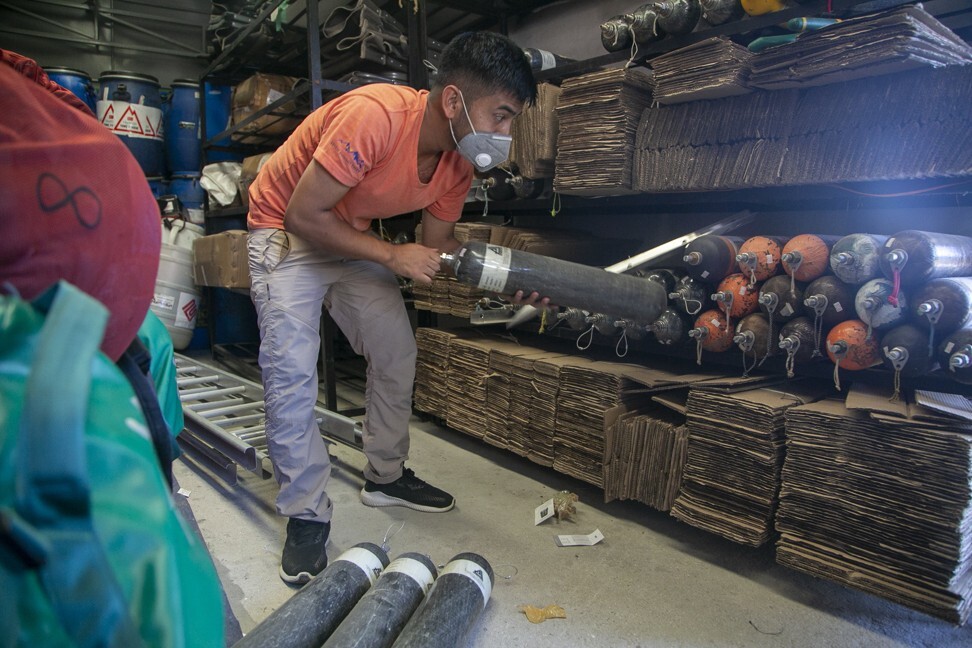
Nepal opens borders to climbers and trekkers despite Covid-19, as it looks to tourism for economic revival
- Around 800,000 people work in Nepal’s tourism industry, which has been severely affected by the pandemic
- Visitors require prior approval of their itineraries and a negative coronavirus test, must quarantine on arrival and hire a local outfitting company
Adventurers looking to scale Nepal’s Himalayan peaks and trek its mountain trails can finally do so, for the first time in seven months, as the country reopens to foreigners even as the coronavirus pandemic leaves it short of hospital beds.
Foreign visitors are a major source of income for Nepal and the closure has affected the estimated 800,000 people who work in the tourism industry.
For now the reopening will come with restrictions and mainly be limited to those seeking to climb or trek its famous peaks. Nepal is home to the eight of the 14 highest mountains in the world, including the tallest, Mount Everest.
“We are not opening the country for all visitors and only mountaineers and trekkers who have taken prior permit will be allowed to come to Nepal,” said Rudra Singh Tamang, director general of Nepal’s Department of Tourism. “We are opening to a sector of visitors who we know we can handle and manage.”

Rather than a visa on arrival, visitors now need to get prior approval, give details of their itinerary, hire a local outfitting company and have health insurance that covers Covid-19 treatment. They are required to take a coronavirus test before leaving their home country, stay for a week in quarantine at a hotel in Kathmandu and then take another coronavirus test before being allowed to climb the mountains.
Local guides, porters, cooks and helpers who will be part of any mountaineering support team will be required to take coronavirus tests and prove they have been living in areas with no infections for two weeks.
With Everest reopening, is Nepal putting cash before caution?
“We are trying to revive the tourism industry that was badly hit by the pandemic, but we are not taking any changes or any risks,” Tamang said. “We did a test run just recently with a foreign expedition team and now have a good idea how to manage the adventure tourists.”
Spring is the mountaineering season when foreign climbers come to Nepal to attempt to scale the highest peaks, whereas the autumn is popular for trekkers who come to hike the mountain trails. The spring mountaineering season was cancelled in March, when the scale of the pandemic became clear, and was followed by the country mostly closing its borders to outsiders.
Nepal has reported 176,500 coronavirus infections since the pandemic began and 984 deaths. The nation of 30 million people is running short on hospital beds and the government has asked patients with less than life-threatening symptoms to stay at home in isolation.

The success of the expedition was celebrated by the mountaineering community in Nepal, as was the government decision to reopen to all qualified mountaineers and trekkers in October.
“We need to give small ray of hope to the people in the adventure tourism industry that there is still a future somewhere to look forward to,” Tamang said.
The pandemic hit as Nepal was preparing to double the number of tourist arrivals with a government campaign declaring 2020 as Visit Nepal year. People in the mountains have been the hardest hit. They normally work these spring and autumn seasons to make enough money to last them all year.
The prospect of trekkers and mountaineers returning to the mountain has been welcome news for those in the industry.
“We in the adventure tourism industry are very excited that the country is finally open, and we are beginning to get many calls and inquiries from foreign clients,” said Ang Tshering, of Asian Trekking in Kathmandu.

He said there was particular interest in the spring 2021 climbing season, especially for Mount Everest.
Nevertheless, with the virus still surging in many parts of the world, it will take time to for normality to return.
On a recent day in the tourist hub of Thamel, in Kathmandu, most of the shops, restaurants, pubs and hotels remained closed. The shops normally selling down jackets, tents, hiking boots and survival equipment were mostly closed and those that were open had few if any customers.
“We have not seen any customer since March in my shop,” said Bir Lama, who sells hiking and mountaineering gear. “While I am paying rent, draining my savings, I am keeping the shop open only to keep myself from going insane.”

